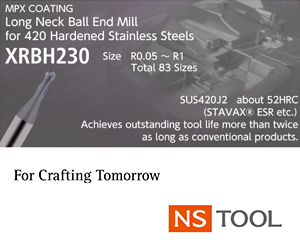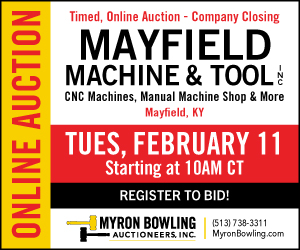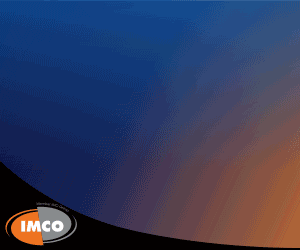Users of the latest Radan release can benefit from streamlined processes, and doing more with fewer clicks. A company-wide investment in development, combined with data from software analytics, means the latest updates are based largely on customer usage and preferences.
Product Manager Olaf Körner says analytics have been able to identify common themes – the sequences people click most, and why. “It shows how customers achieve certain results, and we’ve used those measurements to incorporate sequences that are used many times every day, into just one click.”
A significant update in Radan 2019 R1 makes the popular Radquote function easily accessible to different categories of employees. “Radquote users are generally not the staff who program machine tools with Radan. So, we’ve made Radquote completely standalone and easy to use by anyone – automatically using machine technology for the quote, with Radquote calculating the accurate cycle time and the best material usage,” Körner says. This achieves an accurate quote every time, providing consistency and transparency, irrespective of who is producing the quote.
Radquote not only competitively calculates costing on sheet metal, but all aspects of quoting are now included, such as cutting, bending, welding, painting and assembly.
“It’s also been enhanced to effectively deal with DXF files and also, soon, 3D files, as well as geometry that hasn’t been created yet. For example, if a component contains a number of holes, Radquote can produce a quote based on that information without needing to know exactly where the holes are,” Körner says.
Radquote also links seamlessly with most ERP systems, particularly WorkPLAN. This means that if there’s a material price rise recorded in the ERP system, Radquote will utilize that information.
Radan CAD/CAM is a key area where click habits have been reviewed and advanced for simpler use – saving time and refining business processes. Part preparation is a time-consuming task and some operations have been reduced from two clicks to one, to apply settings.
The Grab Part in Nest Mode function, to change a part in nesting mode, has also been simplified, saving average users an estimated minimum of 50 clicks per day”
The latest update also provides material cost saving through importing remnants via the Raster to Vector function, and a stronger Web option. Körner explains: “Import a remnant via Raster to Vector can be used to eliminate wasting expensive remnants, such as specialized metals which can’t be scrapped. Users can now take a photograph of the sheet and bring it into the CAM system, giving the approximate dimensions, to use later. The system then draws a remnant with that shape cut out and you can use it again.”
The Batch Nest function now benefits from a stronger Web option, which allows parts to be nested evenly across a sheet. This is optimized for the best cut option, where nothing else will fit on the sheet, and is particularly useful to stop sheets moving on punch presses, while preventing heat build-up on lasers by ensuring an adequate space between parts.
Three important updates feature in Radbend, including: improved automatic fingerstop positioning for sharp-angled parts; pre-selection of the bend process depending on the tool selection; and filter tool profiles. Körner explains the tool filter options: “While every tool purchased is in Radbend’s tool library, it can also now show tools filtered according to manufacturer. It also shows all the tools capable of producing the required bend. To reduce that list even further, you can set additional filters. ‘Available,’ is for all tools in the system; ‘Valid’ are tools that would fit the job; and ‘Mapped’ shows tools which are already programmed and ready to go onto a specific machine. Mapped tools are particularly valuable for identifying what tool is available on which machine and in saving time, as setting up a tool involves measuring, and maybe even carrying out test bends, which can take around 20 minutes.”
Radm-ax developments include automatic heat avoidance, hazard avoidance and common line cutting. A new cutting sequence for heat avoidance has been added to prevent heat build-up in the component. Improvements to hazard avoidance, calculating a better and safer path around hazards, and an increase in the ability to cut more difficult angles, such as 30-degree angles, with common line cutting, will also benefit production times.
Multiple Nesting in Radm-ax is now easier, as setup nesting screens have been updated to improve workflow and clarity. A basic nester was added to provide a faster way to nest a single part with the addition of different parts to fill the remaining tube. Organizing the workflow is also easier, thanks to an improved naming convention for generated files. And changes have been made to tube alignment options, making it easier to pick the correct point for alignment with the machine axis.
Concluding, Körner says: “Radan 2019 R1 provides a mix of getting to the result faster, with improving the results themselves. It streamlines what users have to do in their daily jobs. Analytics have enabled us to see how users are interacting with the software, and what steps they’re repetitively taking. We’ve focused on reducing the time to perform these tasks, improving workflow and increasing production times, as a result.”
Related Glossary Terms
- computer-aided manufacturing ( CAM)
computer-aided manufacturing ( CAM)
Use of computers to control machining and manufacturing processes.
- web
web
On a rotating tool, the portion of the tool body that joins the lands. Web is thicker at the shank end, relative to the point end, providing maximum torsional strength.








